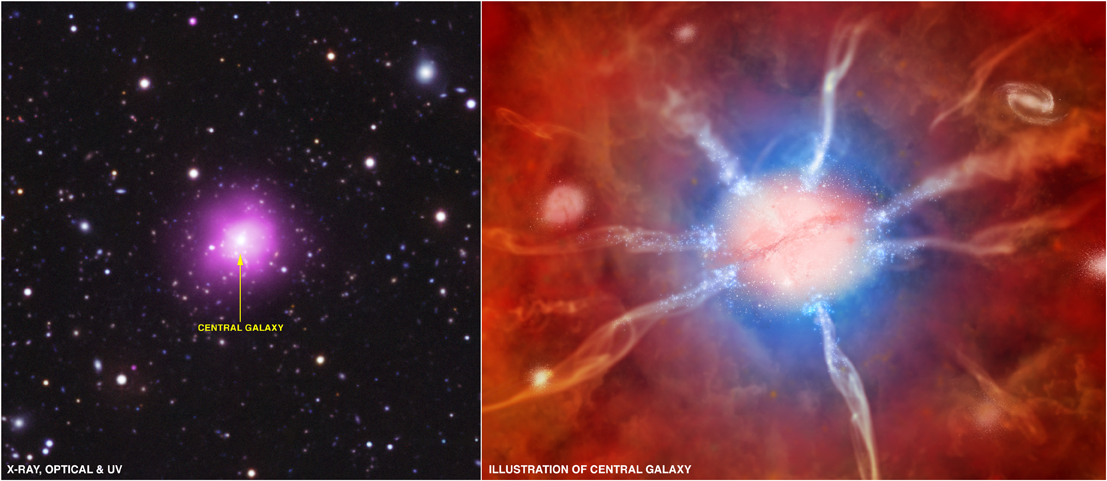Image List
-

The image on the left shows the newly discovered Phoenix Cluster, located about 5.7 billion light years from Earth. This composite includes an X-ray image from NASA's Chandra X-ray Observatory in purple, an optical image from the 4m Blanco telescope in red, green and blue, and an ultraviolet (UV) image from NASA's Galaxy Evolution Explorer (GALEX) in blue. The Chandra data show hot gas in the cluster and the optical and UV images show galaxies in the cluster and in nearby parts of the sky. This galaxy cluster has been dubbed the Phoenix Cluster because it is located in the constellation of the Phoenix, and because of its remarkable properties. Stars are forming in the Phoenix cluster at the highest rate ever observed for the middle of a galaxy cluster. The object is also the most powerful producer of X-rays of any known cluster, and among the most massive of clusters. The data also suggest that the rate of hot gas cooling in the central regions of the cluster is the largest ever observed.
X-ray: NASA/CXC/MIT/M.McDonald; UV: NASA/JPL-Caltech/M.McDonald; Optical: AURA/NOAO/CTIO/MIT/M.McDonald; Illustration: NASA/CXC/M.Weiss